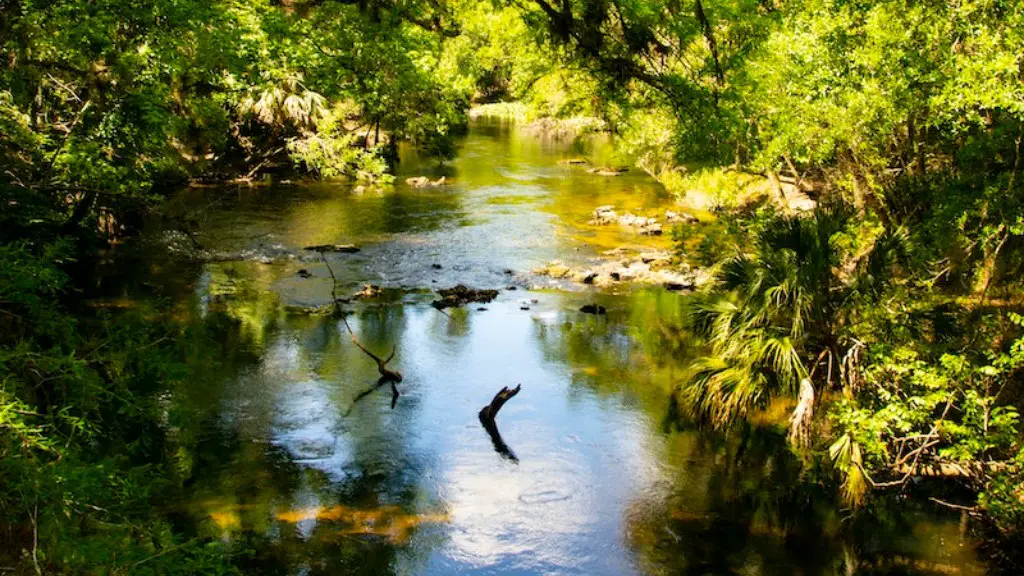The Mississippi River is one of the longest rivers in the world and is also one of the most important in the United States, offering drinking water, transportation and recreational activities. Spanning from Lake Itasca in Minnesota to the Gulf of Mexico, the Mississippi is a defining feature of the United States and has even been immortalized in literature, music, and film. Here is a look at what the Mississippi River is like and how it plays a role in the lives of many across the U.S.
From a geographical perspective, the Mississippi is an enormous river. At over 2,300 miles in length, it is the fourth-longest river in the world and the longest in North America. The Mississippi River and its watershed represent the largest and most important natural resource in the United States by area, creating a vital transport pathway for people and resources. In some areas, the river contributes to 10% of all precious natural resources.
The Mississippi River is also important for its historical and cultural significance. It was a major route of transportation for Native Americans and later European settlers, who used it to move goods and to explore. Today, the river is important for recreation, with some sections devoted to parks and boat launches. Many communities throughout the river benefit from the fishing, boating, and other activities.
The majority of the Mississippi is made up of freshwater, which is essential for the many aquatic species that live in, around, and along the river. River water is also used for drinking and irrigation in many communities, so it is constantly monitored for water quality to ensure it is safe for drinking and all life. The Mississippi River is home to over 300 species of fish and more than 150 species of birds.
The Mississippi River is also under threat from various sources of pollution, including from chemical runoff from industrial sites, nutrient runoff from agricultural fields, and other sources. In addition, dams built along the river in the 20th century have interrupted natural river flow, as these imparid its natural movement and decrease the amount of oxygen and sediment that reaches downstream. To combat this, monitoring and cleanup efforts are in place to keep the river as healthy as possible.
The Mississippi River is a national treasure and an important part of American culture, history, and ecology. It has been the inspiration for many literary works and musical compositions, and continues to be the source of pleasure and recreation. From the many species of birds and fish that it supports to its role in transportation and its crucial part in the nation’s overall water supply, the Mississippi River will certainly remain a vital feature of the U.S. landscape for many more years to come.
Ecosystem Properties
The Mississippi River serves as a vital watershed to the many organisms which inhabit it. The number of species of birds, insects, reptiles and fish which call the Mississippi River home are a testament to the diversity of ecology which the river is able to sustain. This abundance of life is due to the relatively unpolluted nature of the river and the water’s ability to provide a nutrient-rich environment for microorganisms, phytoplankton and other aquatic life forms.
The Mississippi River is also home to various migratory birds, who use the river’s shallow waters as a refuge from their long flights between the warmer climates of the south and the colder temperatures of the north. This influx of waterfowl not only provides an important source of protein to those who hunt in the area, but they also add to the unique beauty of the river.
In addition to its natural ecosystem, the Mississippi River has been host to its fair share of man-made ecological issues. The river is a victim of agricultural runoff, industrial waste and other pollutants, which can lead to decreased water quality and an overall decrease in the abundance of organisms native to the river. As a result, many water conservation and clean-up organizations have worked to reduce pollution in the Mississippi River and nearby basins.
The decomposition of organic matter in the Mississippi River provides energy for the many species that inhabit it. Organic material from trees, leaves, and other vegetation decomposes in the river and forms a source of nutrition for aquatic organisms. These organisms in turn produce waste, adding to the high nutrient levels of the river and completing the circle of life which occurs in the Mississippi.
Economic and Social Impact
The Mississippi River has been a source of economic prosperity for many towns and cities along its course. From providing drinking water to supporting agricultural and industrial activities, the Mississippi River has been key in powering the economy in the Mississippi Delta and beyond.
The river has also been a mode of transportation throughout history. Native Americans and European settlers alike used the river as a pathway to trade and to explore new areas. The river’s expansive length and levee system offered protection to new settlers and protection in times of emergency.
The social implications of the Mississippi River are equally significant. It has been the medium for trade, travel, and leisure and has been a source of joy to many, who spend their time fishing, boating, and swimming in its waters. The wildlife and beauty of the river have made it a source of entertainment and education for all ages.
The Mississippi River has been an important asset to the United States, serving as an economic driver, a means of transport, and a source of beauty and recreation. From its beginnings in Lake Itasca to its termination in the Gulf of Mexico, the Mississippi River has touched thousands of lives with its many gifts.
Environmental Consequences
Due to the incredible length of the river, it is prone to a number of environmental issues. As mentioned earlier, the river has been the victim of various forms of pollution, which can lead to decreased water quality and harm to the many organisms which inhabit it. The construction of dams and levees has also disrupted the river’s natural flow, leading to an overall decrease in the amount of oxygen and sediment which reaches downstream and an increased risk of flooding in flood prone areas.
The development of new infrastructure along the river has also caused environmental concerns, such as riverbank erosion and the spread of invasive species. The introduction of certain types of vegetation can cause a chain reaction in the form of water quality changes, which can end up affecting both aquatic and terrestrial wildlife.
Droughts have also become a concern in recent years, leading to lowered water levels in the Mississippi River and its tributaries. This can have a significant impact on both the ecosystems of the river and the many communities which rely on it for drinking water and other important resources.
Due to these factors, organizations and companies have worked to improve the water quality of the Mississippi River and to protect its unique ecosystems. Restrictions on industrial and agricultural runoff have been implemented, and species-specific conservation efforts are also in effect to help protect the wildlife which populate its banks.
Biodiversity
The Mississippi River holds a immense amount of biodiversity among its waters and along its banks. The array of organisms which live in, around and along the river is estimated to be in the thousands, making the river a vital refuge for birds and other wildlife.
The riparian habitat along the Mississippi River is home to hundreds of species of birds, amphibians, and reptiles. These species often rely on the river for food as well as its protective environment, as the sandbars and islands which dot its banks provide safe havens from predators.
The aquatic life of the Mississippi River is both varied and abundant. In addition to the many species of fish, the future of the river may depend on the presence of numerous species of crustaceans, mollusks, turtles, and even aquatic mammals. Conservation organizations are working to preserve the river’s unique aquatic habitats, as the health of the river depends in large part on the species which thrive in it.
The Mississippi River is one of the most important ecological features of the United States, and it is of great importance to the many species which rely on it for food, shelter, and protection. Its immense size and variety of habitats make it a vital pathway of energy between the ecosystems of North America and the balance of life which thrives within it.
Erosion
The erosive power of the Mississippi River is often overlooked, yet its gradual wearing away of the earth has played a role in the formation of many of the river’s features. From small eddies to large swaths of land which have been altered, the power of water is at work continuously along the Mississippi River.
Riverbank erosion plays an important part in the Mississippi River’s ability to form new land and function as a vital link between the shallow waters of the Gulf of Mexico and the great river itself. Over time, the force of the swift-moving water has caused land to give way and form islands, enriching the soil along the shoreline and allowing for better habitat for the many species which inhabit the area.
Continuous riverbank erosion also has a tendency to decrease when the river’s flow is reduced or blocked in some way. This can lead to a decrease in the amount of natural sediment which reaches downstream, as well as a giving way to other problems, such as flooding. In order to avoid such occurrences, engineers and environmental groups have been working together to maintain a healthy flow in the Mississippi River.
The Misssissippi River is the cornerstone of the United States for many reasons, but its erosive power and ability to reshape the earth is often overlooked. As the river continues to wear away at its banks, it is essential to keep a watchful eye over the Mississippi in order to protect its ecological balance and keep it flowing freely throughout its extensive watershed.





